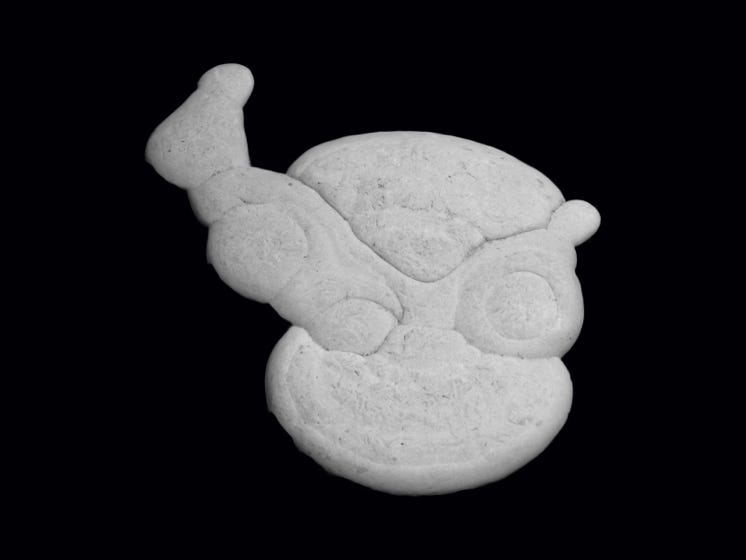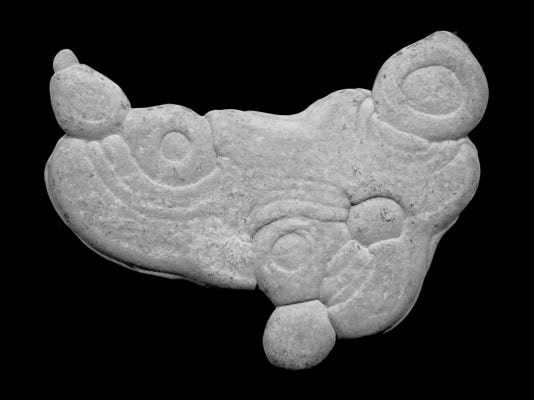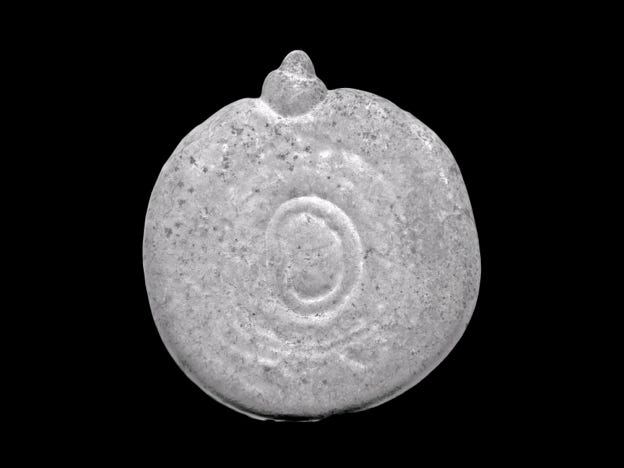Fairy Stones (2)
Excerpts from the book “Pierres de fées” written by Jean-Paul Drolet
These stones, commonly known as “concretions” usually occur as small round masses of flat concentric discs of varying diameters which, when juxtaposed, form mosaics.
Some are reminiscent of works by contemporary artists — such as the small sculptures with an accent of monumentality by Henry Moore, Max Ernst, Alberto Giacometti, Lynn Chadwick or the «pop art» works of Claes Oldenburg. One can even notice a certain analogy with esquimau (inuit) sculptures
Some specimens round or without any particular shape cling to rock fragments in shallow water areas where there are also small egg-shaped spheres and tiny rings. The diameter of the round concretions varies from 5 to 15 cm, while others are elongated and can reach 35 cm (14 inches).
Consisting of fine sand and silt consolidates by a limestone cement (calcium carbonate), these stones and their curious forms are phenomena common to certain regions of northern Quebec, particularly at the bottom of lakes of glacial origin. The upper surface is usually smooth and uniform, while the underside is commonly rough and encrusted with globular protrusions. The irregular lines on some specimens were left by tiny worms or organic debris that have fossilized during thousands of years, as if the earth wanted to keep their memory into its immense geological computer.
These concretions are found in loose Quaternary deposits, having settled in bodies of water filling depressions left by receding glaciers, then having been flushed by the currents and deposited on lake shores and river banks. Little is known about the factors which determined their formation; it is believed that the concretions apparently developed in a permeable layer within the deposit through which water slowly filtered and circulated.
The water of percolation, high in carbon dioxide, probably dissolved the clastic limestone, and the concentration of the resulting solution would have continued to increase until the limestone was deposited, thus producing the concretions.
One can readily imagine that these stones, the shapes of which often suggest anthropomorphic and zoomorphic stylized figures — mother and child or small animal forms, birds, frogs, rodents — fascinated the inhabitants of these northern regions and led to all sorts of whimsical interpretations.
The North American Indians called them «fairy stones», and often wore them for good luck on hunting and fishing expeditions; lovers also offered the most beautiful ones to their beloved. Larger specimens often occupied a place of honour in dwellings; legend had it that these stones protected against evil spirits and brought health and prosperity to the occupants.
While little evidence support the mysterious powers of these fairy stones or concretions, they remain a source of fascination for the earth scientists and a curiosity for the rock collector interested in art forms in nature.





